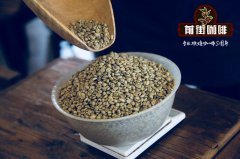Coffee flavor and taste of Shumawa Coffee Manor in Costa Rica.

Professional coffee knowledge exchange more coffee bean information please follow the coffee workshop (Wechat official account cafe_style)
The seven main coffee producing areas in Costa Rica are distributed from northwest to southeast along with the inland central plateau. Costa Rican volcanic terrain with fertile volcanic ash, mild and suitable temperature, and stable and abundant rainfall is one of the reasons why coffee has become one of the main agricultural products in Costa Rica.
Since the coffee industry in Costa Rica began to develop since the middle of the 18th century, it was the first country where coffee was first introduced into Central America and has a long history. Therefore, the coffee organization has a complete system from production to marketing. In terms of quality and quantity, Costa Rican coffee has always been recognized by the world, and has been rated as the world-class high-quality coffee.
One of the two estates of the Shumawa processing Plant (Sumavade Lourdes). Dream Iron (Monte LlanoBonito) Manor won the 2016 extraordinary Cup (CoE). The 13th place in the 2015 Costa Rica extraordinary Cup (CoE) (FincaMonte Llano Bonito) has two estates, MonteLlano Bonito and Monte Lourdes, which has now been named Finca Sumava de Lourdes. The western valley producing area to which Shumawa Manor belongs is one of the seven producing areas in Costa Rica, along with Tarazu and the central valley.
The Shumawa treatment plant is located in the fertile valley of the northern volcano group in Costa Rica, near Naranjo, between 1700 and 1800 meters above sea level. It has 10 hectares of Villasarchi, 2 hectares of SL28, 1 hectare of geisha and other Caturra, Pacamara and Mokka varieties.
The owner of the manor Francisco Mena has two secondary manors, Monte Llano Bonito, this manor has nine blocks, and the other secondary manor Monte Lourdes has six blocks. The two manors are adjacent to each other and share a raw bean processing farm. The main manor is named Shumawa Manor. Now the manor manager Jose Ordonez, there is a full-time team under it, in addition to clearing the land to grow new varieties. A large amount of land is also reserved as a forest reserve for wild animals to have a natural habitat.
Important Notice :
前街咖啡 FrontStreet Coffee has moved to new addredd:
FrontStreet Coffee Address: 315,Donghua East Road,GuangZhou
Tel:020 38364473
- Prev

What are the characteristics of Brazilian coffee beans? Coffee bean production in Brazil.
Professional coffee knowledge exchange more coffee bean information Please follow the coffee workshop (Wechat official account cafe_style) speaking of Brazil Santos, in addition to the football team, I believe many people will think of coffee. Santos is a port in southeastern Brazil. In the past, the name of the port was printed on the export of coffee (generic coffee) from different provinces.
- Next

Coffee roasting time and temperature on coffee beans, how to bake non-sour beans?
Professional coffee knowledge exchange more coffee bean information please follow the coffee workshop (Wechat official account cafe_style) coffee taste, that is, the range and quality of sour and bitter taste, aroma intensity and quality, astringent taste, thick strength and some defects in the taste, is the quality of raw beans, roasting is to correctly grasp the possibility of all kinds of raw beans: to what extent can have the best taste
Related
- Beginners will see the "Coffee pull flower" guide!
- What is the difference between ice blog purified milk and ordinary milk coffee?
- Why is the Philippines the largest producer of crops in Liberia?
- For coffee extraction, should the fine powder be retained?
- How does extracted espresso fill pressed powder? How much strength does it take to press the powder?
- How to make jasmine cold extract coffee? Is the jasmine + latte good?
- Will this little toy really make the coffee taste better? How does Lily Drip affect coffee extraction?
- Will the action of slapping the filter cup also affect coffee extraction?
- What's the difference between powder-to-water ratio and powder-to-liquid ratio?
- What is the Ethiopian local species? What does it have to do with Heirloom native species?

